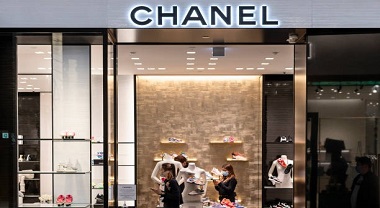COCO vs. INCOCO: A case of Likelihood of Confusion
In the recent ruling of the European Court in the trademark dispute of COCO vs. INCOCO, the Court gives the decision in favor of Chanel, the owner of trademark COCO.
Facts and Board of Appeals’ decision
Innovative Cosmetic Concept filed for international registration of the word INCOCO and designated European Union for the registration in January 2014. The protection was claimed in Nice Classes 3, 35, 44 which was primarily for the field of cosmetic and beauty products. The applicant Chanel opposed this mark in October 2014 and relied on its own earlier mark (French) nos. 1 438 544 and 1 571 046. Both the mark was related to word COCO and was also in the class of 3, 35, and 42. This was for ‘soaps, perfumery, essential oils, hair lotions, toothpaste’, advertising, and others. At first, the opposition division of EUIPO upheld the opposition but the Board of Appeal rejected the decision of opposition division and rejected the opposition by Chanel. Aggrieved by this, Chanel appealed to the Court of Justice of the European Union.
[Image Source: gettyimages]</sup?
Chanel contended that the term COCO was associated with the nickname of Ms. Gabrielle Chanel, in France, more popularly known as Coco Chanel. But the Board of Appeal was not satisfied with the evidence put forward. The evidence which could relate to the consumer’s knowledge of earlier marks was lacking. Moreover, the Board of Appeal contended that the word COCO was represented together with the term “Chanel.” This makes the character of the word COCO not much highly distinctive. The Board of Appeal concluded that the similarity was not the major one where just the average degree of similarity was not sufficient to prove the likelihood of confusion.
CJEU’s observation
The CJEU overturned this decision. On the primary comparison of visually, conceptually, and phonetically, CJEU delved into all three concepts. On the visual part, CJEU observed that EUIPO erred in its observation in a way that the element “in” balances the common word “coco” resulting in below-average similarity. Rejecting the EUIPO observation and relying on Chanel’s contention that the attention seeker in the word is the doubling of CO-CO. CJEU did agree on the part that EUIPO rightly pointed out the element “in” and has no such similarity in the earlier sign. But it should not be construed in a way that starting of the mark is decisive.
Concerning phonetic comparison, the CJEU was with the Board of Appeal decision where Chanel was unsuccessful in proving the higher degree of similarity. CJEU observed that the addition of “in” constitutes a different level of the distinctive sign at the phonetic level. Nevertheless, the comparison of the rhythm of conflicting signs was not of fundamental difference.
Regarding the conceptual similarity, CJEU observed that the nickname “COCO” is easily understood by the public where they will clearly understand one part with what they are known with and the other part in question. The international registration will not prevent the public to recognize the part of the mark to what they are known with.
In the context of the likelihood of confusion, CJEU held that EUIPO again erred in its decision. Assessment of the likelihood of confusion was flawed in its perspective. Reiterating with the similarity issues, the visual similarity was underestimated with a wrong assessment of conceptual similarity. Even though similarities in conflicting goods were found but they were not taken into account. Not getting into the details of the significance of distinctive character, CJEU observed that the decision was so flawed that this perspective need not be examined further. Therefore the decision was overturned and Chanel won the case over the likelihood of confusion.
Author: Saransh Chaturvedi an associate at IP & Legal Filings, in case of any queries please contact/write back to us at support@ipandlegalfilings.com.




